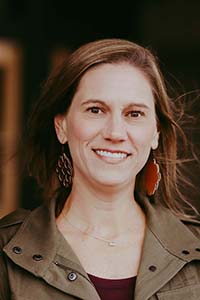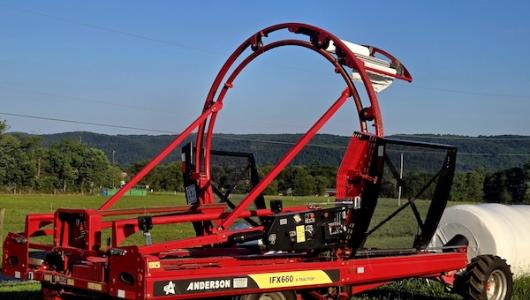USDA’s Risk Management Agency (RMA) connects agricultural producers with high-quality and affordable crop insurance sold by approved insurance providers. This includes the specific needs of urban and innovative producers, who may have smaller and more specialized operations.
In this Ask the Expert, Economist Claire White answers questions about RMA programs and opportunities for urban and innovative producers, including the new Controlled Environment crop insurance program. This new option is part of USDA’s broader effort to support urban agriculture and develop new and better markets for American producers.
Claire has been with RMA for over 20 years, writing and improving crop insurance policies. She specializes in nursery and nursery-related products, cotton, small grains, apples, and many others.

What crop insurance options are suitable for urban and innovative producers, especially those with small or specialized operations?
RMA offers several programs for urban and innovative producers:
- The Micro Farm program provides a risk management safety net for all commodities on your farm under one insurance policy. This insurance plan is tailored for any farm with up to $350,000 in approved revenue, including farms with specialty or organic commodities, or those marketing to local, regional, farm-identity preserved, specialty or direct markets. This program is available in all counties in all 50 states.
- Whole-Farm Revenue Protection (WFRP) provides a risk management safety net for all commodities on the farm under one insurance policy. This insurance plan is tailored for any farm with up to $17 million in insured revenue, including farms with specialty or organic commodities (both crops and livestock), or those marketing to local, regional, farm-identity preserved, specialty, or direct markets. This program is available in all counties in all 50 states.
- The Controlled Environment crop insurance program offers insurance for destruction orders for plant disease and contamination introduced from the environment even though all biosecurity protocols were followed. This program is available in select counties in 25 states.
What are some of the benefits of Controlled Environment crop insurance for producers?
The Controlled Environment crop insurance pilot program offers several benefits to controlled environment producers. It offers crop insurance coverage through a simple application and policy renewal process similar to the Nursery Value Select (NVS) program. There is also new coverage specific to disease and contamination risk in controlled environment operations, and insurance for specific plant categories that are not in other nursery insurance programs. The insurance in the pilot program can also be purchased as a standalone policy or in conjunction with other nursery insurance.
What does the new Controlled Environment crop insurance program offer that has not been available in the past?
The Controlled Environment crop insurance pilot program insures a new class of risk: catastrophic plant disease and contamination subject to destruction orders. It offers coverage for cuttings, seedlings, or tissue culture not typically covered under other RMA programs, as well as all other plants grown in the controlled environment.
What led to the development of Controlled Environment crop insurance?
This new insurance option has its roots in the 2018 Farm Bill, which directed RMA to research the feasibility of a policy to insure production within a controlled environment like a greenhouse. The Farm Bill also directed RMA to research the effectiveness of policies covering production of plants in a controlled environment, including policies based on the risk several types of diseases and contaminations and the risk of quarantine and destruction orders.
How does a producer purchase Controlled Environment coverage or other crop insurance?
Crop insurance is sold and delivered solely through private crop insurance agents. You can contact a local agent using RMA’s Agent Locator to determine if these programs meet their risk management needs. The first sales closing date, or deadline to get coverage, is Dec. 1, 2023, for coverage for crop year 2024.
Want to learn more about crop insurance other programs for urban producers?
If you have questions for RMA about these insurance options, you can reach us here:
- For Micro Farm and WFRP, send an email to rma.wfrp@usda.gov.
- For Controlled Environment crop insurance pilot program, send an email to rma.kc.nursery@usda.gov.
Other good resources include:
- Urban Agriculture on rma.usda.gov
- Urban Growers webpage on farmers.gov
- Small-Scale Producers webpage on farmers.gov
Kathryn Fidler is a public affairs specialist with USDA’s Farm Production and Conservation Business Center, and she can be reached at kathryn.fidler@usda.gov.


